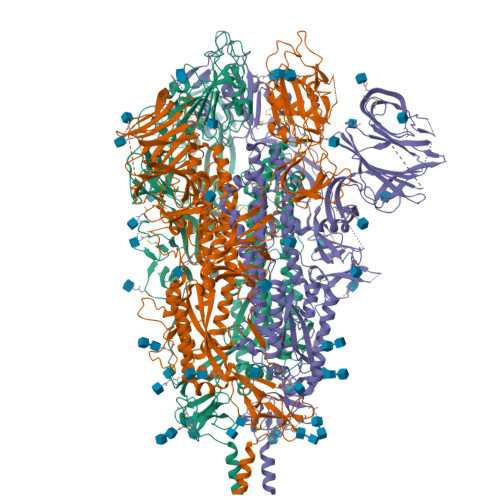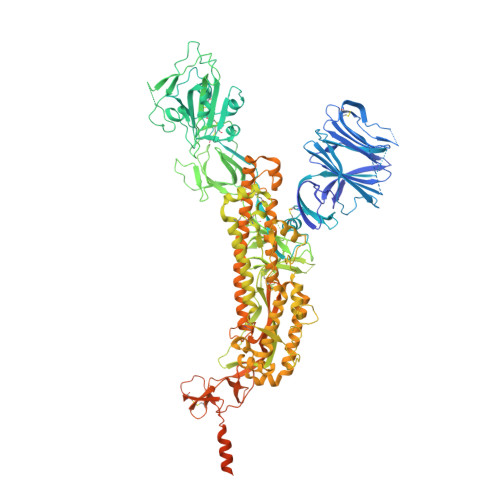In situ architecture and membrane fusion of SARS-CoV-2 Delta variant.
Song, Y., Yao, H., Wu, N., Xu, J., Zhang, Z., Peng, C., Li, S., Kong, W., Chen, Y., Zhu, M., Wang, J., Shi, D., Zhao, C., Lu, X., Echavarria Galindo, M., Li, S.(2023) Proc Natl Acad Sci U S A 120: e2213332120-e2213332120
- PubMed: 37094167
- DOI: https://doi.org/10.1073/pnas.2213332120
- Primary Citation of Related Structures:
7Y6D - PubMed Abstract:
Among the current five Variants of Concern, infections caused by SARS-CoV-2 B.1.617.2 (Delta) variant are often associated with the greatest severity. Despite recent advances on the molecular basis of elevated pathogenicity using recombinant proteins, the architecture of intact Delta virions remains veiled. Moreover, pieces of molecular evidence for the detailed mechanism of S-mediated membrane fusion are missing. Here, we showed the pleomorphic nature of Delta virions from electron beam inactivated samples and reported the in situ structure and distribution of S on the authentic Delta variant. We also captured the virus-virus fusion events, which provided pieces of structural evidence for Delta's attenuated dependency on cellular factors for fusion activation, and proposed a model of S-mediated membrane fusion. Besides, site-specific glycan analysis revealed increased oligomannose-type glycosylation of native Delta S than that of the WT S. Together, these results disclose distinctive factors of Delta being the most virulent SARS-CoV-2 variant.
Organizational Affiliation:
State Key Laboratory of Membrane Biology & Beijing Frontier Research Center for Biological Structure, School of Life Sciences, Tsinghua University, Beijing 100084, China.




















